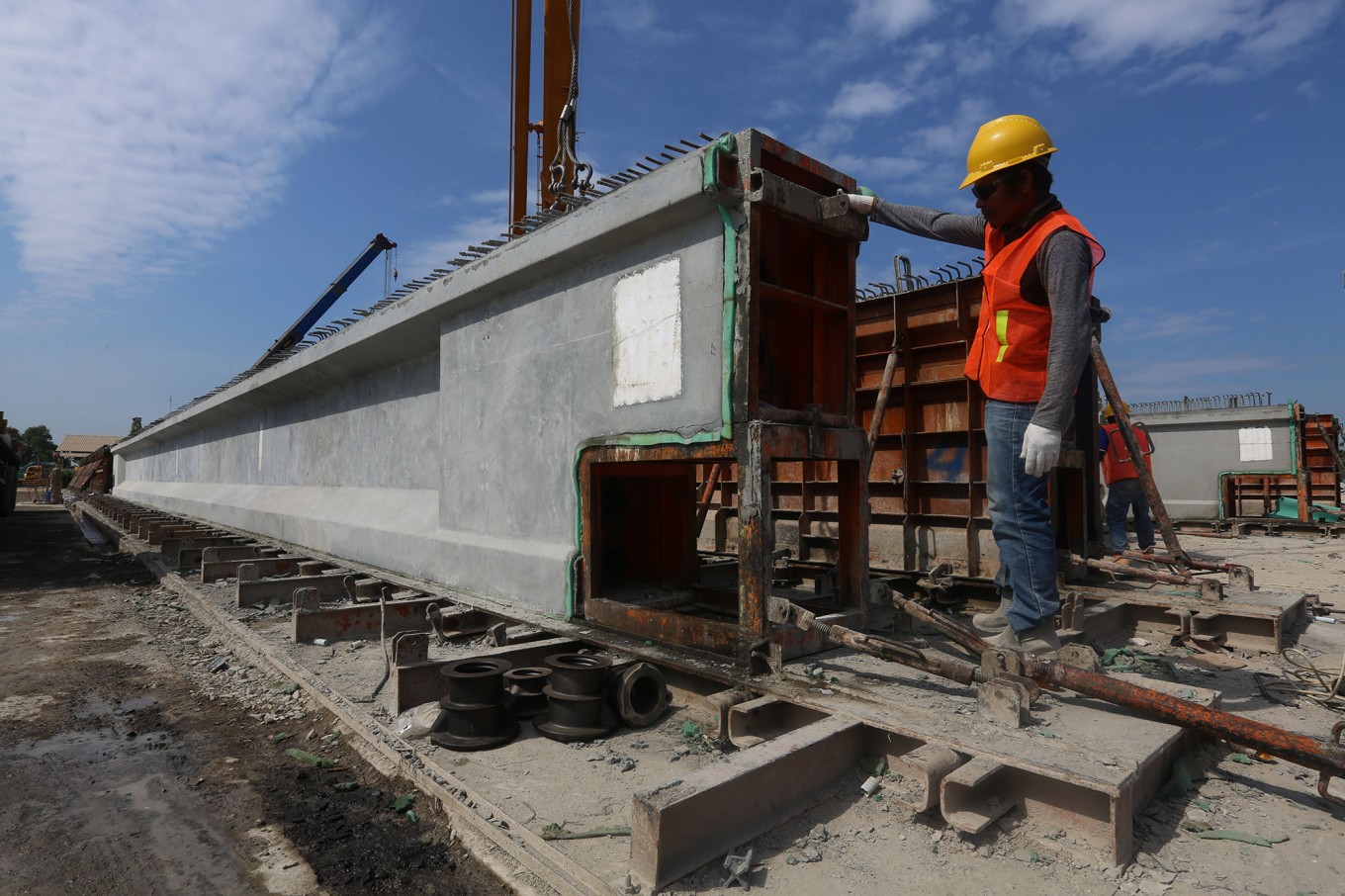Popular Reads
Top Results
Can't find what you're looking for?
View all search resultsPopular Reads
Top Results
Can't find what you're looking for?
View all search resultsGovt eyes credit limit for SOEs in construction
Restricting lending could stall projects, expert says.
Change text size
Gift Premium Articles
to Anyone
S
tate-Owned Enterprises (SOEs) Minister Erick Thohir is looking to curb loan disbursement from state-owned banks to state-owned construction firms, which have struggled to meet their debt obligations, but such a move could lead to new risks.
Details on the matter are still being worked out by the ministry and executives from both parties.
"We will continue to support construction SOEs, but not based on corporations anymore. We will [give loans] based on projects, with multiyear repayment periods," the minister said on Monday, as quoted by Bisnis Indonesia.
According to him, the move is needed because some construction SOEs have mishandled borrowed funds for buying land, buildings and other types of assets, instead of funding projects.
The minister, who has held the position since 2019, said those cases had happened before his term in office but he was committed to finding solutions to the financial problems of the firms in question.
Abra Talattov, who heads the Center of Food, Energy and Sustainable Development at the Institute for Development of Economics and Finance (INDEF), said Erick's statement was a sign that construction SOEs should focus primarily on solving their financial problems.
"It puts pressure on those companies, so they don't feel any privilege or assume that SOE banks will help them [solve] their financial issues. They need to think about how to find external funding, as well as rationalize their projects," Abra told The Jakarta Post on Tuesday.
On the other hand, Abra also questioned whether SOE banks had followed a market-based process before disbursing loans to state-owned construction firms.
"It is a bad precedent for SOE governance. This moment should be [used as an opportunity] to evaluate the performance of the commissioner boards of those SOEs, which should be occupied by professionals," Abra added.
In May, Erick said the outstanding loans from state-owned banks to state-owned construction firms had reached Rp 70 trillion (US$4.6 billion).
According to a disclosure from Indonesia Stock Exchange (IDX), state-owned construction firm PT Waskita Karya has received about Rp 28.4 trillion in long-term loans from SOE banks, including Bank Mandiri, BNI, BRI, BSI and BTN, which marks an increase from Rp 28 trillion at the end of last year.
The company failed to make payments for principal and interest that were due on Sunday.
That comes after the government announced on Aug. 2 that it had canceled a Rp 3 trillion state capital injection (PMN) for the firm.
Waskita Karya booked a Rp 2.07 trillion net loss in the first half of this year.
Because of that, the government is considering granting Waskita Karya a suspension of debt payment obligations (PKPU), making it possible for the company to restructure its debt in agreement with creditors through a court-facilitated process.
If the parties involved fail to reach a deal in the PKPU process, the court can declare the debtor bankrupt. Flag carrier Garuda Indonesia entered such a process in 2021 and completed its debt restructuring a year later.
"We are in discussions with the Finance Ministry about the process. The options include PKPU and comprehensive restructuring," Erick said on Monday, as reported by Kompas.
Fellow state-owned construction firm Wijaya Karya, meanwhile, has Rp 7 trillion in short-term loans and Rp 2.7 trillion in long-term loans from state-owned banks, which also marks a slight increase in debt since the turn of the year.
Proper buffer
Indef's Abra said the situation could be dilemmatic for the state-owned banks, as a restriction of loans issued to SOEs in the construction sector could result in stalled projects. If that happens, those lenders will also bear losses.
The Financial Services Authority (OJK) admits that most loans for construction SOEs are from state-owned banks but claims the lenders have mitigated the risks with significant buffers.
Bank Mandiri said it had started and would continue to make specific provisions for its exposure to Waskita Karya and Wijaya Karya. On top of that, the lender is pushing for debt restructuring at the two troubled construction firms to be concluded “in the next few weeks”.
BNI, another state-owned bank, has also increased its provisions for outstanding at-risk construction-sector loans to around 53.5 percent at the end of June, compared to 46.6 percent at the end of last year. Around 60 percent of those provisions are earmarked to cover Waskita Karya’s debt and another 30 percent are for Wijaya Karya’s loans.
CreditSights, a global credit research firm, said the exposure of state-owned banks to troubled state-owned construction firms was "manageable".
"Their generally strong capital levels and profitability allow the higher provisions to be comfortably absorbed without affecting their financial soundness," CreditSights' credit research analyst Lim Ze Hao told the Post on Aug. 2.
Hao pointed out that Bank Mandiri expected its credit cost ratio to be between 1.1 and 1.3 percent by the end of this year, down from a projection of 1.3 to 1.5 percent made at the beginning of this year. That comes despite the higher buffers for construction SOEs.
Similarly, BNI also kept its credit cost guidance for this year below 1.5 percent.
CreditSights' report mentions that BNI deems the stress in construction sector SOEs to be a systemic issue resulting from an overly aggressive infrastructure push in recent years. Thus, it expects more of the firms to seek restructuring.
"However, [BNI] is proactively increasing management overlays for problematic debtors, and the bank's overall exposure to the construction SOEs is a manageable Rp 19 trillion, or around 3 percent of its total loans," the report states.










